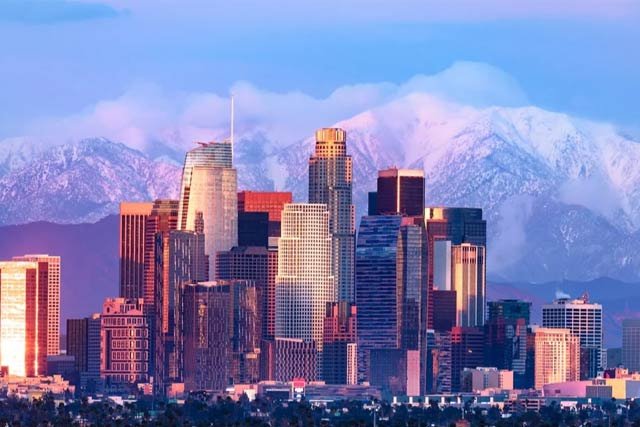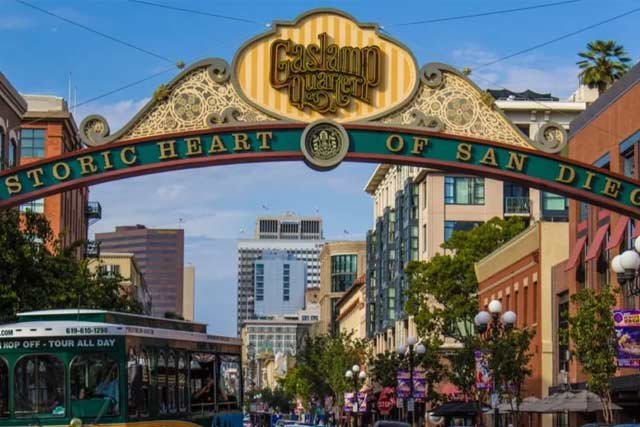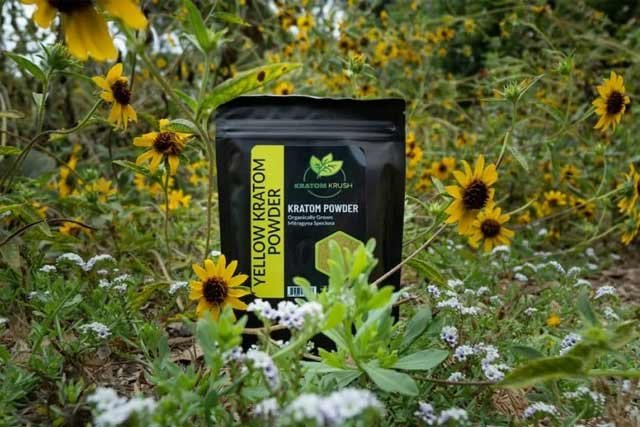Simply put, kratom (Mitragyna speciosa) is legal in the state of California, except in San Diego and Oceanside. Kratom’s legal status in the US is confusing at times! If you live in California and are interested in kratom, you may have heard conflicting statements on whether kratom is legal or not. I’m here to clear up all that legal jargon and put your mind at rest.
How has this complex situation emerged, and could the laws change in the future? Join me as I take a deep dive into California’s kratom laws.
Looking for more info? Don’t miss these posts!
1. Kratom Legality in California

Like many states, California has contrasting laws that create an uncertain legal environment. Kratom remains legal at the federal level, but various states, counties, and cities across the country take a different view.
This is pretty annoying, and the lack of legal clarity scares many off from buying a product that could transform their mental or physical health.
Still, it’s not all bad. Given nearly 40 million people live in Cali, it’s a pretty big deal that kratom is legal in California, one of 44 states.
But it’s a laughable situation. Authorities can charge San Diego residents for buying kratom, but if you head a few miles down the road, you’ll find it in stores.
It’s no wonder people get confused, and I imagine plenty of kratom users have made innocent mistakes.
2. Kratom County Bans in Cali

Before I start on the specifics of the kratom laws in the cities of San Diego and Oceanside, I must stress that this bizarre situation is not a problem specific to California.
Sarasota County in Florida is a great example of a jurisdiction where kratom is prohibited in an otherwise legal state. That several lower legislative bodies around the U.S. have taken a stance on kratom shows the plant is hot on the legal agenda.
Thankfully, kratom is not illegal in any Californian city. However, San Diego County supervisors – home to 3.3 million U.S. residents – contemplated a ban in early 2020.
Some were looking to declare kratom a public nuisance, but users came to the rescue, talking up kratom’s benefits. This incident indicates kratom’s legal status is uncertain and that advocates will have to keep fighting for kratom rights in the years to come.
So why exactly is kratom banned in San Diego and Oceanside? Here’s what they have to say.
2.1. San Diego

America’s Finest City banned kratom in June 2016. The ban came as part of a sweeping ordinance that also prohibited the “manufacturing, sale, distribution and possession of spice, bath salts, and other synthetic and psychoactive drugs.”
The ordinance mostly made sense. In recent years, an array of dangerous new drugs have popped up that got around existing laws. Frustratingly, it caught up with kratom unfairly – and I’m not just saying that because I love kratom!
Kratom is a natural substance. Most drugs San Diego was trying to ban are cooked up in laboratories. Lawmakers simply took advantage of this all-encompassing law to restrict the freedoms of San Diegans.
I think they knew that a standard attempt to ban kratom would have been unsuccessful.
2.2. Oceanside

Same story, different city, and just as infuriating! The wording in Oceanside’s Code of Ordinances once again smacks ignorance towards kratom and a cheap shot to ban it.
Kratom is listed as one of 94 “novel psychoactive substances” banned in the city. True, it’s psychoactive, but novel? That’s not just misleading but outright false. Kratom has been around for thousands of years.
The Code does accurately state that kratom is a drug of concern for the Drug Enforcement Administration. However, the DEA’s efforts to ban kratom in 2016 were ultimately unsuccessful.
And since when was it acceptable to ban something that is only “of concern”?
It’s a joke that kratom, a substance so many have found life-changing, was banned in such a way. The ordinances made no mention of kratom’s therapeutic potential.
In total contrast, most of the other drugs that were banned are pretty much unknown. If lawmakers in these cities wanted to ban kratom, they should have had the guts to fight a fair fight.
3. History of Kratom Legality in California
Until 2016, kratom was legal throughout California. Kratom grows in Southeast Asia, and hardly any Americans knew about it until a few years ago. But thanks to the internet, we live in a truly global world.
Cultivators in Indonesia, Thailand, Malaysia, and other parts of Southeast Asia now ship kratom to Americans on a massive scale. In just a couple of decades, kratom has gone from being a regional speciality to a worldwide phenomenon.
Lawmakers in California and beyond started taking an interest in kratom when reports emerged of severe illness and death. A sharp uptick in kratom-related cases at Poison Control centers across the U.S. also occurred in the 2010s.
Since kratom is scientifically unproven and has severe side effects (even though they are rare), it’s no surprise the DEA took an interest.
However, that DEA interest has sparked a chain reaction, as apparent in San Diego and Oceanside. Kratom’s future became very uncertain in 2016, although the DEA’s failure to ban it has eased the pressure somewhat.
Given that kratom has only become more popular, that nowhere else in California has banned kratom in the past five years is a success.
4. Where Can I Buy Kratom in California?

Because California state doesn’t impose any restrictions on kratom, it’s widely available in stores. The big stores like Walmart and Target shy away from kratom products, as do Walgreens, CVS, and other nationwide pharmacies.
The big guys like certainty and don’t want to risk investing in large amounts of kratom stock in case the federal law changes.
However, the absence of the huge grocery stores gives the smaller vendors a chance to cash in. Smoke shops and gas stations sell kratom, and you may even find specialized kratom stores in the cities (just not San Diego or Oceanside!).
However, your best bet for buying kratom in California is an online vendor such as Kratom Krush. Physical stores have higher costs – rent, employees, bills – and these inevitably end up on the customer.
Online vendors don’t have these overheads, can sell products much cheaper, and even offer free shipping if you buy enough!
Kratom Krush only stocks third-party tested products, ensuring both quality and safety. These reports are freely accessible on their site and confirm their products are free from heavy metals and pesticides.
Transparency is vital in the unregulated kratom market!
Final thoughts
If you have any doubts about kratom’s legal status in California, I hope this post has cleared them up. The law isn’t too complicated, but the penalties could be severe if you mess up.
Hopefully, the tide will turn when more research is available, and those cities that have restricted kratom from their citizens will be forced into a U-turn. We can hope!
For most Californians, things are great. However, the legal situation in Oceanside and San Diego is irritating. If authorities banned kratom fair and square, it would be a bitter pill to swallow, but at least there would be no complaints. These city ordinances have screwed more than 1.5 million potential kratom users over.
Anyway, if kratom is legal where you are, don’t forget to head over to Kratom Krush and explore their premium range of Kratom powder and capsules. Kratom Krush offers top-tier products, an enormous collection, and unmatched low prices.
FAQs
No. The cops don’t care where you have bought your kratom. They are only interested in the law in that location. If authorities catch you with kratom in a banned state, city, or county, they will charge you. Moreover, since no medical authority approves kratom for any conditions, there’s no chance you’ll get away with claiming a therapeutic exemption. It’s just not worth the risk.
Yes, provided you are flying to another legal jurisdiction. Airports are federal property, so it’s perfectly fine to carry a legal substance like kratom. If you do fly with kratom, don’t try concealing it or playing any tricks. You aren’t committing a crime, but you may needlessly arouse suspicion and end up awkwardly. Not everybody knows what kratom is, and I’m sure you would rather avoid a tense conversation with a confused security guy.
California’s progressive stance on medical marijuana in 1996 was groundbreaking, but recent actions suggest a shift in lawmakers’ attitudes towards personal freedom, such as crackdowns on smoking and impending vaping restrictions. The future legality of kratom may hinge on scientific findings, especially with its growing popularity. Despite attempting to categorize kratom as Schedule 1 in 2016, the DEA faced a strong backlash from users, preventing its ban, and they have made no further attempts since. However, if the federal government moves to ban kratom, states may struggle to maintain its legality.
It’s essential to stay informed and active in protecting the rights of kratom users. Keeping up with kratom news, sharing personal experiences, and engaging with lawmakers are effective ways to support the cause. The kratom community, with organizations like the American Kratom Association, has a strong track record of successfully advocating for kratom legality. Still, ongoing vigilance is necessary as new challenges may arise.


